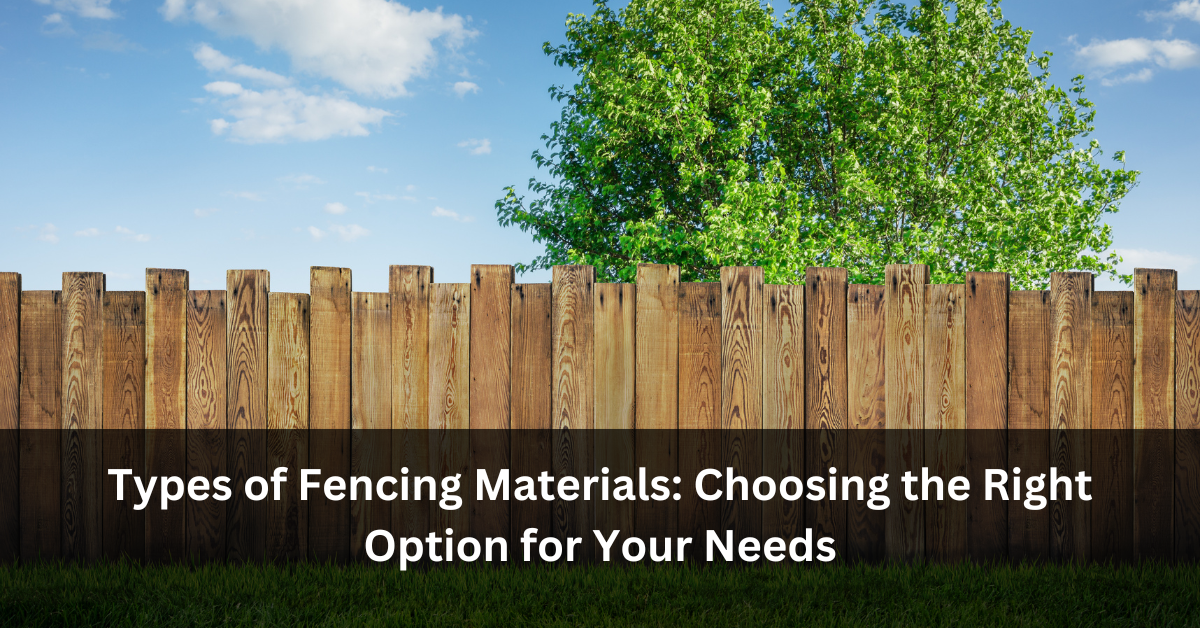There are various fencing materials, from timber, bamboo, and concrete to composite, vinyl, and brick. When you are ready to start a new fencing project, choose the right material based on your needs. Here are factors to consider when selecting a material for your Texas fence:
Purpose
Determine the purpose of putting in a new fence. Some fence materials work better than others for specific applications. You may install fences to define property limits, provide a safe play area, keep animals out, improve aesthetics, and even boost resale value.
There are fencing materials and designs to meet the needs and purposes of every project. A concrete or stone fence is an excellent option for optimal security, privacy, and weather protection. Aluminum fencing is a high-value choice to improve aesthetics in low-risk and low-traffic areas.
Speed of Installation
Determine how soon you need your Texas fence. You might need a quick fix for emergencies, like a pet or an intruder problem. Vinyl, aluminum, and chain-link are quick to install. A wood fence may take longer because the material needs cutting, shaping, and treating.
The fence’s design and layout may also affect the speed of installation. Consult an expert fencing specialist to know how long your fencing options will take to be installed. Using professional fencing installers can save you time because they have the knowledge, resources, and experience to get the job done quickly.
Budget
Explore the cost of various fence types and choose a material within your budget. The cost of materials may vary based on availability, accessibility, and labor requirements. Steel and chain link fencing may cost the least because they require less labor and installation time. Concrete, stone, and brick walls are more labor-intensive, making them more costly.
Where wood is readily available, it can be a more affordable option than composite and vinyl fencing. Other elements, such as the fence’s size, design intricacy, and contractor or supplier preference, may also affect your budget. Once you narrow your choices, request estimates for each option from your contractor to determine the best material for your needs.
Maintenance
Determine the amount of work you’re ready to invest in maintaining your new fence. Regular staining or painting is necessary on wood fences to extend their longevity. Vinyl and aluminum are minimal maintenance options since they may not get stains or discolorations like wood and other materials. Wrought iron fencing may need sanding down and painting for ongoing weather protection.
Building Codes
Check with the county, city, and homeowner associations for local fencing restrictions. They may restrict the fencing material, the height of the fence, the distance from the property boundary, and the colors. If you don’t follow these guidelines, you risk being fined or having your fence taken down.
Property Design
Look for fence materials that go well with the architectural design of your property. Wood or vinyl fences go well with a modern ranch home, while ornamental metal or brick fences go well with older, classical-style buildings. Ask around or consult a specialist to identify functional fences to enhance your home’s aesthetics.
Local Weather and Climate
Examine the year-round weather report to determine which fencing materials are best for your property. If you reside in a city that has frequent storms, pick fence materials that can resist wind, rain, or snowfall. Avoid deteriorating materials if you live in an area with constant water and precipitation exposure. A local fencing expert can advise on the best materials for your local climate.
Seek a Texas Fence Expert
Consider these various factors when choosing the right fencing materials for your needs. An experienced fencing contractor can help you select the best fencing materials and they can verify that you stay within your budget. Contact a Texas fence expert today to start your project.

